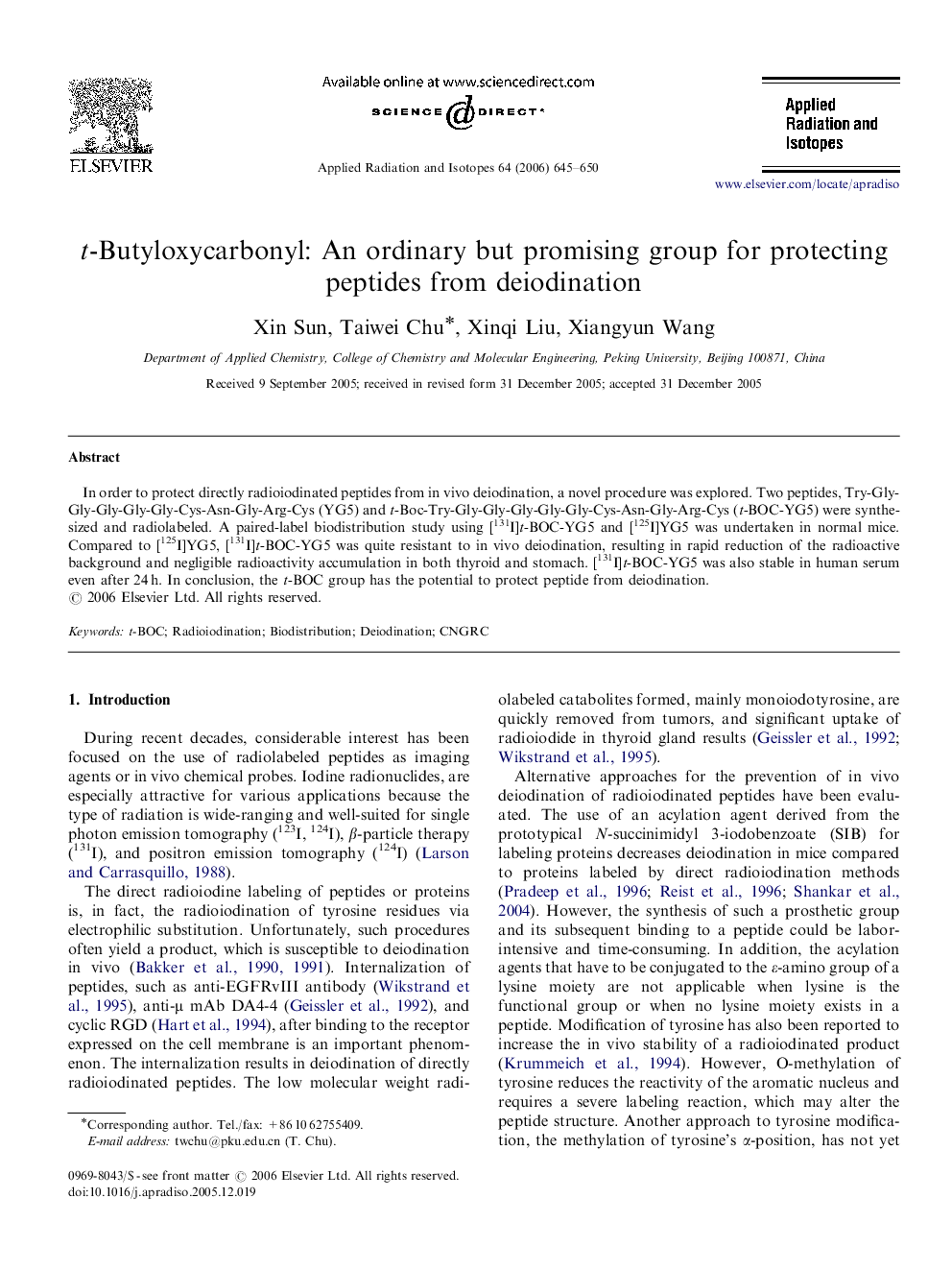| Article ID | Journal | Published Year | Pages | File Type |
|---|---|---|---|---|
| 1878308 | Applied Radiation and Isotopes | 2006 | 6 Pages |
Abstract
In order to protect directly radioiodinated peptides from in vivo deiodination, a novel procedure was explored. Two peptides, Try-Gly-Gly-Gly-Gly-Gly-Cys-Asn-Gly-Arg-Cys (YG5) and t-Boc-Try-Gly-Gly-Gly-Gly-Gly-Cys-Asn-Gly-Arg-Cys (t-BOC-YG5) were synthesized and radiolabeled. A paired-label biodistribution study using [131I]t-BOC-YG5 and [125I]YG5 was undertaken in normal mice. Compared to [125I]YG5, [131I]t-BOC-YG5 was quite resistant to in vivo deiodination, resulting in rapid reduction of the radioactive background and negligible radioactivity accumulation in both thyroid and stomach. [131I]t-BOC-YG5 was also stable in human serum even after 24 h. In conclusion, the t-BOC group has the potential to protect peptide from deiodination.
Related Topics
Physical Sciences and Engineering
Physics and Astronomy
Radiation
Authors
Xin Sun, Taiwei Chu, Xinqi Liu, Xiangyun Wang,
